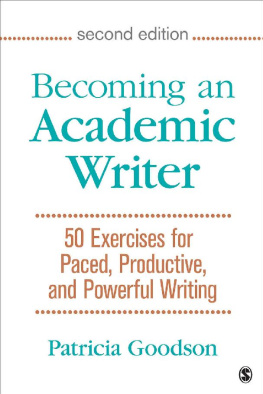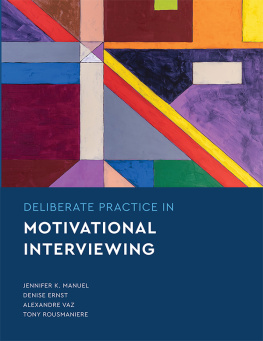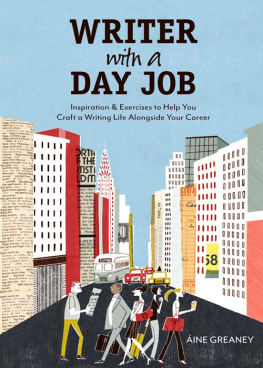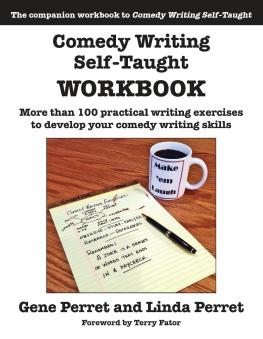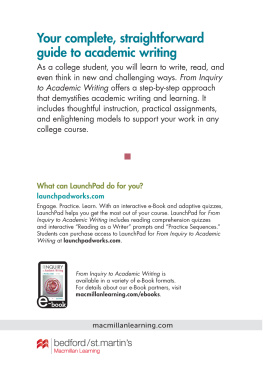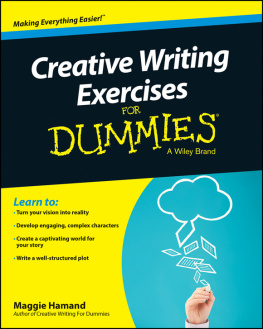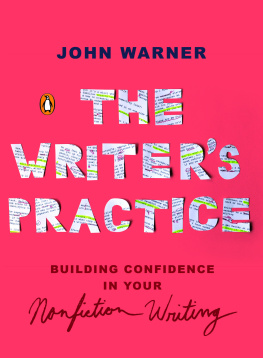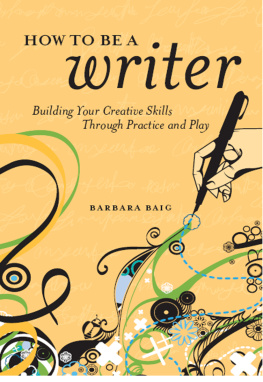Copyright 2017 by SAGE Publications, Inc.
All rights reserved. No part of this book may be reproduced or utilized in any form or by any means, electronic or mechanical, including photocopying, recording, or by any information storage and retrieval system, without permission in writing from the publisher.
FOR INFORMATION:
SAGE Publications, Inc.
2455 Teller Road
Thousand Oaks, California 91320
E-mail: order@sagepub.com
SAGE Publications Ltd.
1 Olivers Yard
55 City Road
London, EC1Y 1SP
United Kingdom
SAGE Publications India Pvt. Ltd.
B 1/I 1 Mohan Cooperative Industrial Area
Mathura Road, New Delhi 110 044
India
SAGE Publications Asia-Pacific Pte. Ltd.
3 Church Street
#1004 Samsung Hub
Singapore 049483
Acquisitions Editor: Leah Fargotstein
eLearning Editor: Katie Bierach
Editorial Assistant: Yvonne McDuffee
Production Editor: David C. Felts
Copy Editor: Talia Greenberg
Typesetter: Hurix Systems Pvt. Ltd.
Proofreader: Ellen Brink
Indexer: Jean Casalegno
Cover Designer: Anupama Krishnan
Marketing Manager: Susannah Goldes
Printed in the United States of America
Names: Goodson, Patricia, 1958 author.
Title: Becoming an academic writer : 50 exercises for paced, productive, and powerful writing / Patricia Goodson.
Description: Second edition. | Thousand Oaks, California: SAGE Publications, Inc., 2016. | Includes bibliographical references and index.
Identifiers: LCCN 2015038931 | ISBN 978-1-4833-7625-7 (pbk. : alk. paper)
Subjects: LCSH: English languageRhetoric. | Report writing. | Academic writing.
Classification: LCC PE1408 .G585 2016 | DDC 808/.042dc23 LC record available at http://lccn.loc.gov/2015038931
This book is printed on acid-free paper.
16 17 18 19 20 10 9 8 7 6 5 4 3 2 1
Contributors to POWER in Practice
Chyllis E. Scott, Ph.D.
Wura Jacobs, Ph.D.
Lei-Shih Chen, Ph.D.
Nicola L. Ritter, Ph.D.
Mina Beigi, Ph.D.
Shuang Wu, M.A.
Jill Zarestky, Ph.D.
Tiberio Garza, Ph.D.
Xuewei Chen, M.A.
Catherine A. Cherrstrom, Ph.D.
Tracey S. Hodges, Ph.D.
Preface to the Second Edition
In the preface to the first edition, I admitted I never imagined writing a book of this kind. Working on this second edition, I also must admit I did not expect the books success! It has been such a joy to hear from people who take time to sharein person, by e-mail, or in their blogsthe many ways in which the book has helped their writing and their productivity. I owe these people, and countless others who have used and recommended the exercises, immense gratitude. And thank you, also, for the suggestions on how to improve the text. I incorporated many of them, hoping the book will meet readers needs even more so than the first edition.
Changes to the First Edition
In this second edition, the most substantive change is the addition of Appendix A, Reading-&-Writing: How to Stop Making the Literature Review an Excuse for Not Writing. I added this material in response to requests for addressing in more depth the literature review portion of academic writing. I confess I struggled with how best to do this. I did not want to write a tutorial on literature reviewsthat would take another book to do the material any justice. In the end, I decided to add what I teach in the POWER Writing Studios and my classes about how to read and write simultaneously, along with a system for doing so. Because the information did not lend itself to a series of exercises, I opted for the appendix format. I hope you find it useful.
Other changes in this edition include the POWER in Practice text boxes added to each chapter. The authors of these testimonials are, or have been, POWER consultantsan integral part of the POWER Services I describe in Research Shows boxes allow readers to take a brief break from the main topic and learn about research on various other facets of academic writing.
One smaller change is a list of each chapters main points in a single page (or less), at the end of the chapter. In the first edition, the main points appeared in the beginning, but the outline format seemed to contradict my recommendation not to outline before writing (see , Exercise 22). This new summary provides one to two sentences capturing the main points of each chapter, to help you better recall the text.
Other minor changes include adding a new checklist for obtaining various types of feedback (see ); updating information; removing obsolete links; and adding new items to Appendix B, Additional Resources. Most of the original text, however, remains unaltered.
As I stated in the first edition, this remains a work in progress, and your feedback is important for keeping the work alive and well! Please feel free to comment, ask questions, or just say hello by e-mail or Google+. Heres my address: patgoodson777@gmail.com.
Wishing you much success and a joy-filled writing career.
Patricia Goodson
College Station, Texas, 2015
Preface to the First Edition
I never imagined writing a book like this. Yet here we are, this book and I, attempting to motivate you to write more, write better, and publish your academic work. I cant help but feel both wonder and surprise when I reflect on the journey that led us here.
One reason I never expected to write such a book lies in my professional training. Having started my career in linguistics, I eventually found an academic home in health education and a research specialty in adolescent sexuality. While I managed to sustain an interest in all things language related, prior to this book, my academic writing comprised reports on evaluations of sex education programs, development of new contraceptives, and studies of adolescents sexuality. My previous book critiqued current health behavior theories; it had little to do with language or writing, except for the approach I employed. In that text, I challenged readers to view social science theories as stories, as narratives written by scholars to explain why people do what they do.

